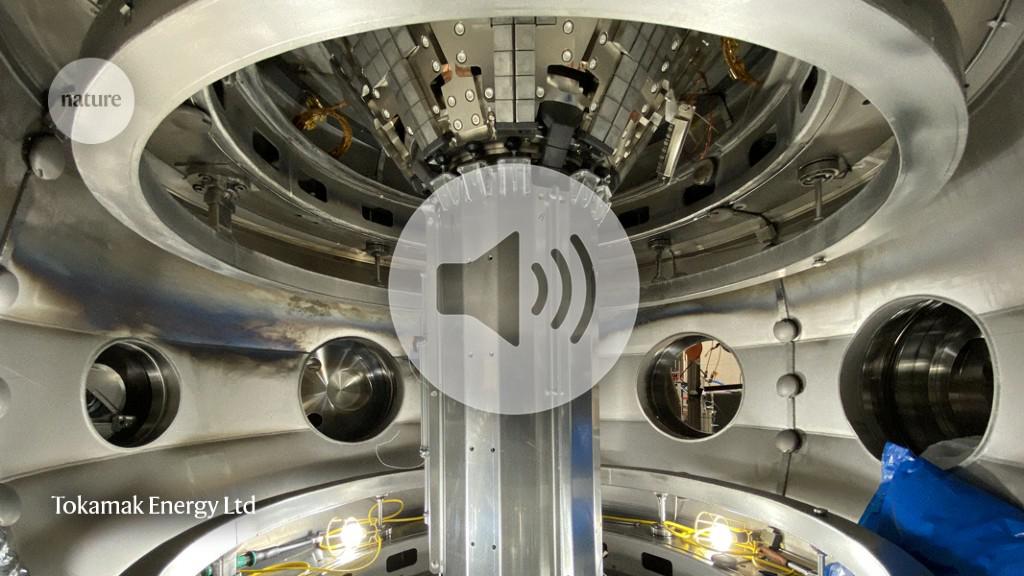The ancient village of Culham, nestled in a bend of the River Thames west of London, seems an unlikely launching pad for the future. But next year, construction will start here on a gleaming building of glass and steel that could house what many people consider to be an essential technology to meet demand for clean energy in the twenty-first century and beyond.
Long derided as a prospect that is forever 30 years away, nuclear fusion seems finally to be approaching commercial viability. There are now more than 30 private fusion firms globally, according to an October survey by the Fusion Industry Association (FIA) in Washington DC, which represents companies in the sector; the 18 firms that have declared their funding say they have attracted more than US$2.4 billion in total, almost entirely from private investments (see ‘Fusion funding’). Key to these efforts are advances in materials research and computing that are enabling technologies other than the standard designs that national and international agencies have pursued for so long.
Fusion funding
Private fusion firms have disclosed more than $2.4 billion in funding.
TAE Technologies
880 US$ million
Helion Energy
578
Commonwealth Fusion Systems
250
General Fusion
200
Tokamak Energy
200

Other (12 firms)
302
TAE Technologies 880 US$ million
Helion Energy 578
Commonwealth Fusion Systems 250
General Fusion 200
Tokamak Energy 200
Other (12 firms) 302
TAE Technologies 880 US$ million
Helion Energy 578
Commonwealth Fusion Systems 250
General Fusion 200
Tokamak Energy 200
Other (12 firms) 302
The latest venture at Culham — the hub of UK fusion research for decades — is a demonstration plant for General Fusion (GF), a company based in Burnaby, Canada. It is scheduled to start operating in 2025, and the company aims to have reactors for sale in the early 2030s. It “will be the first power-plant-relevant large-scale demonstration”, says GF’s chief executive Chris Mowry — unless, that is, its competitors deliver sooner.
Designed by British architect Amanda Levete, GF’s prototype plant illustrates the way fusion research has shifted from gargantuan state- or internationally funded enterprises to sleek, image-conscious affairs driven by private companies, often with state support. (GF will receive some UK government funding; it has not disclosed how much.)
In this respect, advocates of fusion technology say it has many parallels with the space industry. That, too, was once confined to government agencies but is now benefiting from the drive and imagination of nimble (albeit often state-assisted) private enterprise. This is “the SpaceX moment for fusion”, says Mowry, referring to Elon Musk’s space-flight company in Hawthorne, California.
“The mood has changed,” says Thomas Klinger, a fusion specialist at the Max Planck Institute for Plasma Physics (IPP) in Greifswald, Germany. “We can smell that we’re getting close.” Investors sense the real prospect of returns on their money: Google and the New York City-based investment bank Goldman Sachs, for instance, are among those funding the fusion company TAE Technologies, based in Foothill Ranch, California, which has raised around $880 million so far. “Companies are starting to build things at the level of what governments can build,” says Bob Mumgaard, chief executive of Commonwealth Fusion Systems (CFS), based in Cambridge, Massachusetts.
And just as private space travel is now materializing, many industry observers are forecasting that the same business model will give rise to commercial fusion — desperately needed to decarbonize the energy economy — within a decade. “There’s a very good shot to get there within less than ten years,” says Michl Binderbauer, chief executive of TAE Technologies. In the FIA report, a majority of respondents thought that fusion would power an electrical grid somewhere in the world in the 2030s.









